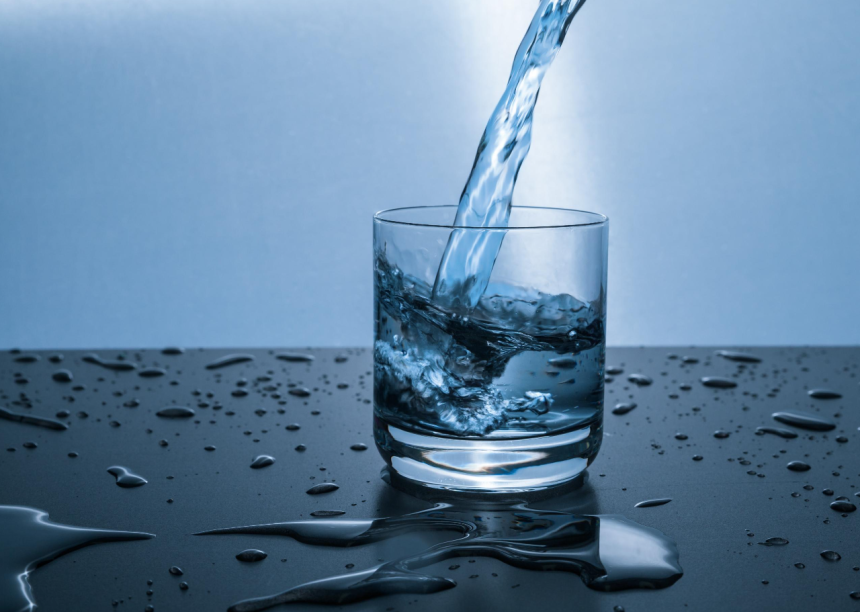In our daily lives, water is an indispensable element, especially crucial for the healthy growth of children. However, when focusing on the safety of children’s drinking water, lead contamination in water becomes an issue that cannot be ignored. Lead contamination can potentially harm the neurological system and physical development of children, making it urgent to ensure the safety of their drinking water.
- Harms of Lead Contamination
- Regular Water Quality Testing
- Use Cold Water
- Regular Flushing of Pipes and Faucets
- Installation of Filters
- Avoid Use of Ceramic and Pottery
- Understand the Material of Household Water Pipes
- Provide a Diet Rich in Iron, Calcium, and Vitamin C
- Regular Health Checkups
- Educate Children on Drinking Water Habits
- Seek Professional Advice
To comprehensively safeguard the overall water quality of our homes, we can consider introducing an efficient solution known as a whole house water filter, as discussed in the following article. This advanced technology not only provides clean drinking water at every water source point in the home but also filters water for various uses such as bathing and kitchen activities, offering comprehensive water quality protection for the family.
Harms of Lead Contamination
Lead contamination poses serious health risks, especially for children and pregnant women. Here are some major hazards that lead contamination may trigger:
- Neurological Damage: Lead has significant toxicity to the central nervous system, especially affecting children. Prolonged exposure to lead may lead to intelligence decline, learning disorders, and behavioral issues.
- Impact on Growth and Development: Children are in a crucial stage of growth and development, and lead poisoning may hinder normal growth, causing damage to physical and cognitive functions.
- Immune System Impairment: Lead may affect the normal functioning of the immune system, making individuals more susceptible to infections.
- Kidney Damage: Prolonged exposure to lead may cause damage to the kidneys, affecting their normal detoxification and regulatory functions.
- Blood System Issues: Lead contamination can lead to blood system problems, such as anemia, as lead disrupts the normal production of hemoglobin.
- Behavioral and Emotional Problems: Long-term lead poisoning may result in behavioral issues, including lack of concentration, hyperactivity, and emotional instability.
- Harm to Pregnant Women and Fetuses: Exposure to lead during pregnancy can cause developmental issues in fetuses, including premature birth, low birth weight, and abnormal neurological development.
- Impact on Reproductive System: Lead may have negative effects on the reproductive system, including reduced fertility and affecting the quality of male sperm.
- Chronic Health Issues: Long-term exposure to lead may lead to chronic health problems, including cardiovascular diseases, hypertension, and other chronic conditions.
Regular Water Quality Testing
Water quality testing is the first line of defense in protecting our home water source from lead contamination. Regularly testing the lead content in household drinking water is crucial, being both a responsible choice for family health and an effective management of home water quality. With the help of professional water quality testing tools or services, we can ensure accurate and reliable test results, providing a scientific basis to guide further protective measures.
Use Cold Water
In the selection of children’s drinking water, the use of cold water is not just a simple habit but a wise choice for their health. Compared to hot water, cold water releases less lead, effectively reducing the risk of lead exposure. Additionally, avoiding directly taking water from hot faucets is to minimize lead dissolution and release, ensuring that we provide children with fresh and safe drinking water.
Regular Flushing of Pipes and Faucets
Maintaining the health of pipes and faucets is a key link in preventing lead contamination. When faucets or pipes have not been used for an extended period, it is essential to regularly open the faucets and let the water flow for a period. This step is not only to welcome a fresh water experience but also to clear suspended particles that may accumulate in the pipes, reducing the release of suspended lead. This simple yet effective step is an indispensable part of safeguarding home water quality and ensuring the health of children. Through regular flushing, we can ensure the cleanliness of the water source, reduce the risk of lead penetration, and provide a more reliable water environment for children.
Installation of Filters
To create a comprehensive water quality protection system at home, the installation of a whole-house water filtration system is crucial. The application of professional lead filters, especially efficient filters like activated carbon filters, can not only provide clean drinking water at every water source point but also filter water for various uses, offering comprehensive water safety for the family.
The whole-house water filtration system, with its professional filtration mechanism, efficiently reduces the lead content in water, providing a safer and more reliable drinking water source for children. Under the protection of this system, we not only address the issue of drinking water but also establish a solid barrier in every aspect of life, ensuring that family members can enjoy fresh and healthy water in any water-use scenario.
Regular filter replacement is a key step in ensuring the continuous and efficient operation of the whole-house water filtration system. This is not just routine maintenance but also proactive care for the health of the family. Through this simple yet effective measure, we not only establish a reliable protection net in every corner of the home but also create a sustainable water quality management mechanism for the entire family. Therefore, the whole-house water filtration system undoubtedly plays a crucial role in ensuring the safety of children’s drinking water, creating a healthy living environment free from lead contamination.
Avoid Use of Ceramic and Pottery
When choosing household utensils, especially containers used for storing or heating water, avoiding the use of ceramic and pottery is to eliminate potential lead contamination. These materials may contain lead, so choosing lead-free options such as glass, stainless steel, or plastic containers becomes a safer choice. This small choice in daily life practice will have a far-reaching and positive impact on the safety of the home water source, providing a more trustworthy water environment for children.
Understand the Material of Household Water Pipes
The material of household water pipes directly relates to the safety of water quality, especially for older homes. Before the 1980s, the likelihood of using lead pipes was higher. Therefore, understanding the material of water pipes and taking corresponding measures is crucial. Considering replacing lead pipes and choosing safer pipe materials is to cut off the possibility of lead contamination at the source. This decision is not only a health guarantee for family members but also a wise investment in sustainable water quality management for the future.
Provide a Diet Rich in Iron, Calcium, and Vitamin C
The dietary structure of children directly affects their growth, development, and immune system. To reduce lead absorption, we can provide sufficient iron, calcium, and vitamin C by reasonably combining foods. Encouraging the consumption of foods rich in these nutrients, such as red meat, dairy products, and fruits, not only boosts children’s resistance but also establishes a solid nutritional foundation for their health. This is not just a rational choice in nutrition but also a practical and feasible lifestyle recommendation for preventing lead poisoning.
Regular Health Checkups
Regularly testing children’s blood lead levels, especially in areas with a higher risk of lead exposure, is to detect potential lead poisoning issues early on. Through this systematic monitoring, we can understand the real-time lead exposure situation in children and take necessary medical measures when needed. This is both proactive care for children’s physical health and an important step in family health management.
Educate Children on Drinking Water Habits
Educating children to develop good drinking water habits, including choosing safe water sources and using water cups, is to minimize the potential risks of lead in their daily lives. Helping them understand the importance of maintaining water safety not only contributes to forming healthy lifestyle habits but also instills a sense of self-protection. Through such education, we not only provide a safe drinking water environment for children but also cultivate a responsible attitude toward their own health.
Seek Professional Advice
When parents are concerned about lead contamination in household drinking water, seeking advice from professional water quality testing organizations or engineers becomes crucial. Taking necessary measures based on professional opinions is to ensure that children are kept away from the potential hazards of lead. Professional consultation provides wise decision-making guidance for the family and is also a wise guarantee for the health of family members.















